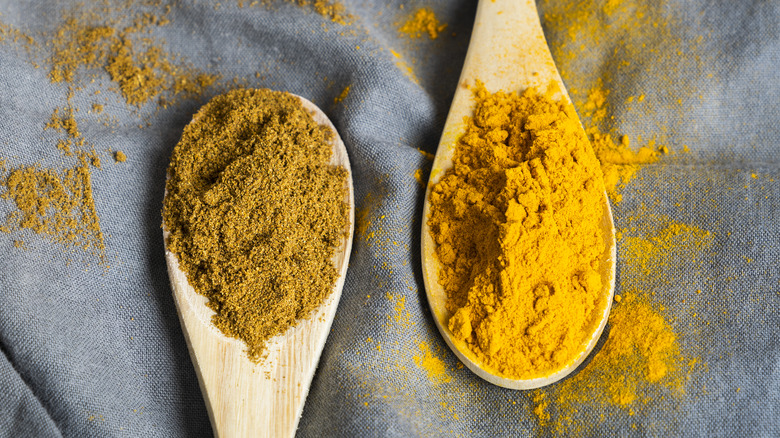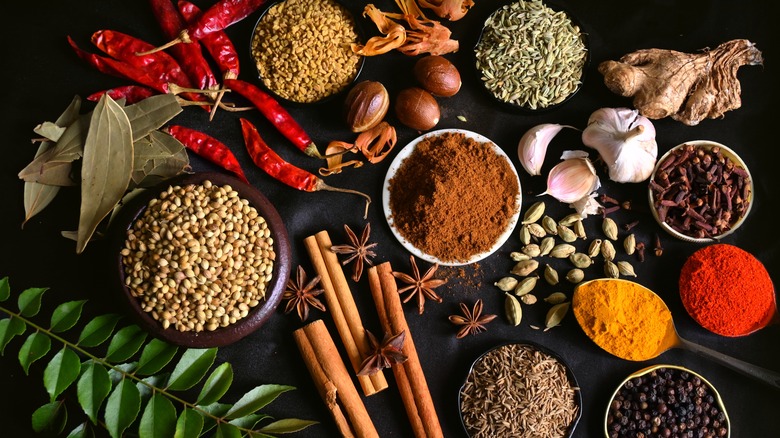The Worst Mistake You Can Make When Swapping Curry Powder For Cumin In A Dish
A well-stocked pantry can save you in a pinch when you need to substitute a spice for something you're missing, but sometimes swaps can get tricky and lead to mistakes that can ruin a dish. Cumin is one of those lucky spices that has lots of alternatives that can help out in a cooking emergency, but one option, namely curry powder, should be used with caution.
The biggest mistake most cooks make when using curry powder as a substitute for cumin is going overboard. It's perfectly okay to use this spice — especially since one of its key ingredients is, in fact, cumin — but it is a very strong spice that can easily overpower a dish. To avoid this problem, start small and taste your food as you go. You can always build on the flavor by adding more curry powder if you want more spice, but once added, you can't take it away.
What is the difference between curry powder and cumin?
Cumin comes from the Cuminum cyminum plant, a member of the parsley family, and has an earthy flavor. It comes in both seed and powder form, and each one affects recipes differently. In seed form, cumin is great when toasted and provides a strong pop of flavor when bitten into. And in powder form, it imparts its deep flavor evenly throughout recipes like meat rubs, sauces, and soups (such as this white chicken and navy bean chili).
Curry powder is a combination of spices that blend perfectly to give food the distinctive "curry" flavor. It typically includes turmeric, coriander, chili powder, and cumin, and variations can include things like fenugreek, garlic, caraway, and more. Curry powder's versatility is remarkable, not just as a substitute for cumin, but to give dishes an unexpected pop of flavor.

